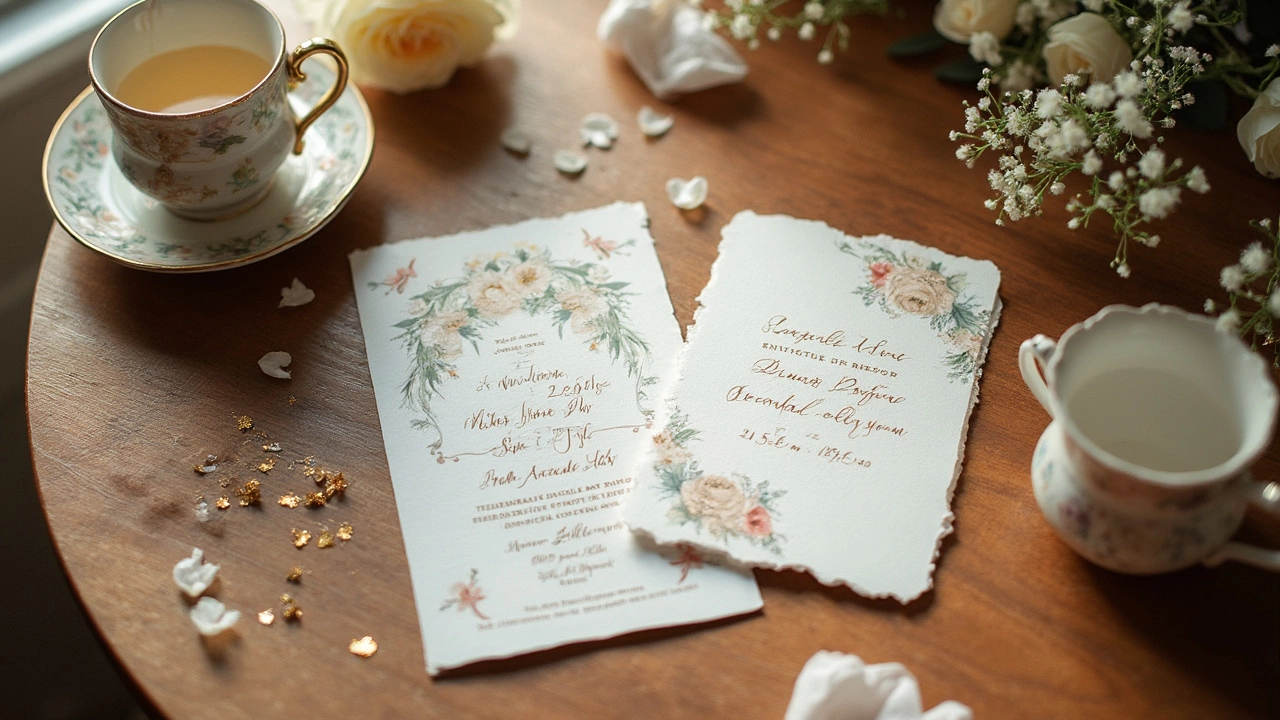Invitation Paper: How to Pick the Best Stock for Your Wedding Invites
Did you know the paper you choose can set the tone before anyone reads the wording? The right invitation paper makes your invite feel luxurious, matches your theme, and even helps the mail reach its destination without a hitch. Let’s break down what matters so you can order with confidence and stay on budget.
Paper Types and Textures
First, decide if you want a classic look or something with a modern edge. Matte cardstock is popular for its smooth, non‑shiny finish; it reads well under any light and feels sturdy. Glossy cardstock adds a subtle shine that makes colors pop, perfect for bold floral designs. If you love a vintage vibe, linen‑textured paper mimics fabric and adds a tactile surprise when guests flip the card.
Another option is recycled paper. It’s eco‑friendly, often has a natural speckled look, and can be a great story point in your wedding narrative. For a luxe feel, consider pearl‑coated or metallic paper. These have a faint shimmer that catches the eye without being over the top. Remember, the heavier the paper, the more premium it feels—most wedding invites sit between 80 and 120 lb (approximately 215–325 gsm).
Practical Tips for Ordering and Budgeting
Start by ordering a sample pack. Most printers will send a small batch of their most popular stocks, so you can feel the texture and see how your design looks before committing to a full run. When you compare quotes, ask if the price includes printing, envelope matching, and any special finishes like foil stamping or embossing. Those add‑ons can quickly double the cost if you’re not careful.
Timing matters, too. Give yourself at least eight weeks from design approval to having the invites in hand. That window lets you handle any re‑prints, address the envelopes, and mail them out at the ideal time—usually six to eight weeks before the big day. If you’re on a tight budget, print on standard 100 lb cardstock and add a decorative ribbon or wax seal. The simple accents give a high‑end vibe without the premium paper price tag.
Don’t forget postage. Heavier cards need extra stamps, especially if you’re sending them overseas. A quick weigh‑in at your local post office can save surprise costs later. If you’re sending many invites, ask the printer if they offer “mail‑ready” services; they’ll pre‑fold, seal, and sometimes even address the envelopes for you.
Finally, think about storage. Keep your printed invites flat in a climate‑controlled room. Humidity can warp paper, and direct sunlight can fade any special inks you chose. If you’re ordering early, store them in a sturdy box with tissue paper between each invite to prevent scratches.
Choosing the right invitation paper isn’t just about looks; it’s about feel, durability, and staying on schedule. By testing samples, budgeting for finishes, and planning your mailing timeline, you’ll send out a set of invites that impresses guests and matches your wedding vision—all without any last‑minute panic.

- Jun, 18 2025
- Comments 0